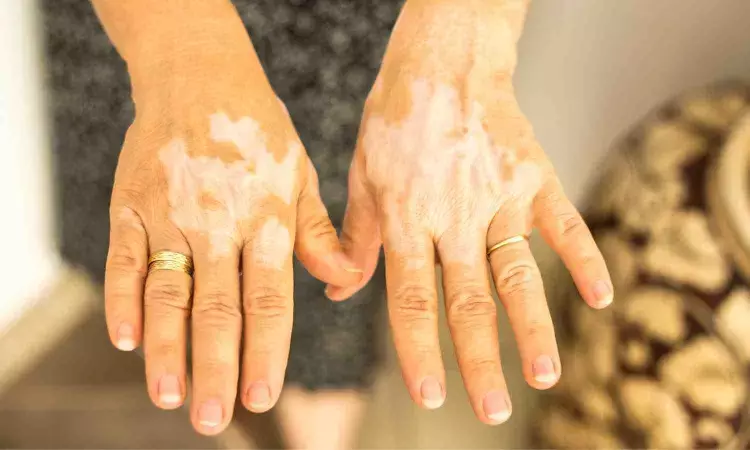- Home
- Medical news & Guidelines
- Anesthesiology
- Cardiology and CTVS
- Critical Care
- Dentistry
- Dermatology
- Diabetes and Endocrinology
- ENT
- Gastroenterology
- Medicine
- Nephrology
- Neurology
- Obstretics-Gynaecology
- Oncology
- Ophthalmology
- Orthopaedics
- Pediatrics-Neonatology
- Psychiatry
- Pulmonology
- Radiology
- Surgery
- Urology
- Laboratory Medicine
- Diet
- Nursing
- Paramedical
- Physiotherapy
- Health news
- Fact Check
- Bone Health Fact Check
- Brain Health Fact Check
- Cancer Related Fact Check
- Child Care Fact Check
- Dental and oral health fact check
- Diabetes and metabolic health fact check
- Diet and Nutrition Fact Check
- Eye and ENT Care Fact Check
- Fitness fact check
- Gut health fact check
- Heart health fact check
- Kidney health fact check
- Medical education fact check
- Men's health fact check
- Respiratory fact check
- Skin and hair care fact check
- Vaccine and Immunization fact check
- Women's health fact check
- AYUSH
- State News
- Andaman and Nicobar Islands
- Andhra Pradesh
- Arunachal Pradesh
- Assam
- Bihar
- Chandigarh
- Chattisgarh
- Dadra and Nagar Haveli
- Daman and Diu
- Delhi
- Goa
- Gujarat
- Haryana
- Himachal Pradesh
- Jammu & Kashmir
- Jharkhand
- Karnataka
- Kerala
- Ladakh
- Lakshadweep
- Madhya Pradesh
- Maharashtra
- Manipur
- Meghalaya
- Mizoram
- Nagaland
- Odisha
- Puducherry
- Punjab
- Rajasthan
- Sikkim
- Tamil Nadu
- Telangana
- Tripura
- Uttar Pradesh
- Uttrakhand
- West Bengal
- Medical Education
- Industry
Both targeted and whole-body NB-UVB are effective treatment options for acral vitiligo patients: Study

India: In a groundbreaking development in acral vitiligo treatment, a split-body randomized controlled trial has demonstrated the efficacy of whole-body and targeted narrowband ultraviolet B (NB-UVB) phototherapy. The trial, conducted by a team of dermatologists, reveals promising results in stabilizing acral vitiligo with minimal repigmentation beyond the wrists and ankles.
Both whole-body and targeted NB-UVB are effective treatment options for patients with acral vitiligo; however, the feet and hands are more resistant to treatment, the study stated.
"At the end of the treatment, over 50% repigmentation was achieved in 42.2% of the limbs in the whole-body phototherapy group and 37.5% of the limbs in the targeted phototherapy group. There was no repigmentation in any of the lesions distal to the ankle and wrist in both groups," the researchers reported.
Vitiligo, a chronic skin condition characterized by depigmentation, affects millions worldwide, causing significant psychological and emotional distress for those afflicted. Acral vitiligo, specifically involving the extremities such as hands and feet, presents unique challenges due to its resistance to traditional treatments.
In vitiligo, narrowband ultraviolet B phototherapy promotes stability and repigmentation. No studies have compared targeted NB-UVB with whole-body NB-UVB treating acral vitiligo. Therefore, Keshavamurthy Vinay, Post Graduate Institute of Medical Education and Research, Chandigarh, India, and colleagues aimed to compare whole-body NB-UVB with targeted NB-UVB in inducing stability and repigmentation in acral vitiligo.
For this purpose, the researchers recruited thirty-two patients with bilaterally symmetrical acral vitiligo lesions (distal to elbows and knees). Patients received whole-body NB-UVB treatment, with one foot and one hand shielded until knee and elbow followed by targeted NB-UVB treatment on the shielded side.
Patients were assessed at intervals of 4 weeks for 24 weeks using Vitiligo Skin Activity Score (VSAS), Vitiligo Disease Activity (VIDA) score, Vitiligo Area Scoring Index (determined through fingertip method, using the method for calculating facial-VASI), and degree of repigmentation.
The researchers reported the following findings:
- After 12 weeks, 87.5% of patients achieved a VIDA score of 3, with none having active disease at 24 weeks.
- Over 50% repigmentation was observed in 42.2% and 37.5% of limbs in whole-body and targeted groups, respectively.
- No improvement in F-VASI scores of hands and feet (distal to wrist and ankles) was noted with either modality over the 24 weeks.
In conclusion, the study showed comparable repigmentation rates between whole-body and targeted narrowband ultraviolet B groups. The limited effectiveness of phototherapy in the repigmentation of feet and hands underscores an important therapeutic gap.
Reference:
Thind, A., Vinay, K., Mehta, H., Bishnoi, A., Kumaran, M. S., & Parsad, D. (2024). Whole-body and targeted narrowband ultraviolet B phototherapy effectively stabilize acral vitiligo with negligible repigmentation beyond wrists and ankles: Results from a split-body randomized controlled trial. Photodermatology, Photoimmunology & Photomedicine, 40(2), e12960. https://doi.org/10.1111/phpp.12960
Dr Kamal Kant Kohli-MBBS, DTCD- a chest specialist with more than 30 years of practice and a flair for writing clinical articles, Dr Kamal Kant Kohli joined Medical Dialogues as a Chief Editor of Medical News. Besides writing articles, as an editor, he proofreads and verifies all the medical content published on Medical Dialogues including those coming from journals, studies,medical conferences,guidelines etc. Email: drkohli@medicaldialogues.in. Contact no. 011-43720751


